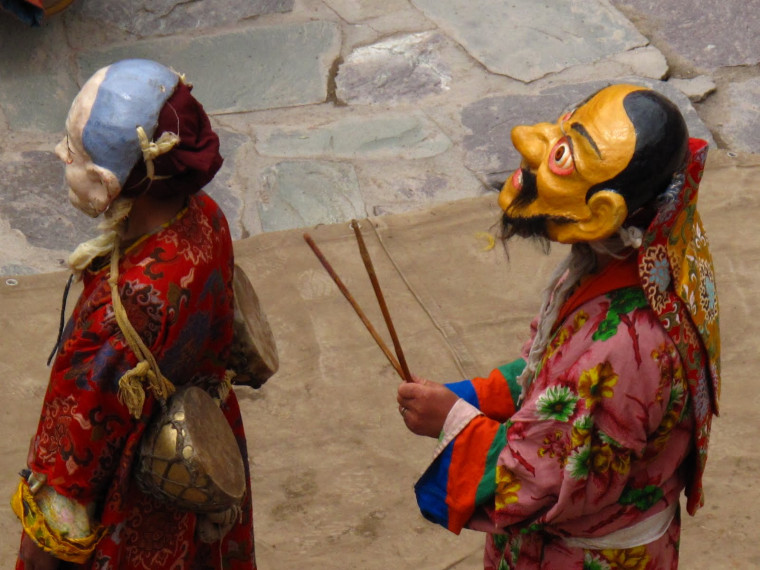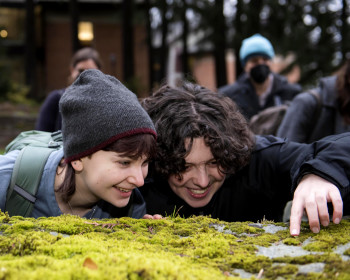The Images and Politics that Resurface
Open gallery

November 23, 2009
A year and a half ago, I wrote in the conclusion to my senior thesis: “In an increasingly stateless and transient world, place still matters. Place and place-attachment is neither static nor nostalgic. The contextual processes of how refugees form attachments to place can inform not only the dominant stereotypes of refugees, but also how environmentalism reveres a localized and singular place attachment.” A lot has happened in the time since I wrote that—I graduated in the Spring of 2008 and wanted nothing to do with academia, so I got my EMT (Emergency Medical Technician), and a job as a ski patroller. When the snow melted, I realized (amazingly enough!) that I had enough funds for a trip overseas. So I spent the past three months traveling: first to Sweden where I met two friends from LC for three weeks of rock climbing and mountaineering in Northern Sweden and on the Lofoten Islands off the Northwest coast of Norway.
From Scandinavia, I headed to India, where I spent three weeks studying Tibetan Buddhism and climbing in the high Himalayan plateau of Ladakh. From there I traveled south to the northern plains and visited the more touristy sites of Jaipur in the Rajasthani desert, Agra to see the truly magnificent Taj Mahal, and Varanasi to see the Hindu holy city. I also went to Dharamsala, the home in exile for His Holiness the Dalai Lama, the Tibetan Government, and a large population of Tibetan refugees who have recently escaped from Tibet. I have been interested in the political situation in Tibet for a long time, but it always seemed as something that was handed to me, rather than something I sought out on my own. In middle school, my best friend’s mother would host monks and rimpoches who came to give teachings in the town hall, in small town Vermont. I fell into Tibetan culture by cooking momos (dumplings filled with vegetables or mutton) and tingmo (a steamed bread) for the teachers and being told we had to go give khatas (ceremonial scarves and a sign of respect) to the lamas. But in Ladakh, in the high Himalayas, it became my own. I was traveling to 1000 year old temples tucked into the barren hillsides offering khatas again to 25 foot tall carved wooden Buddhas, or going to festivals in ancient monasteries where dancers retold traditional Buddhist folklore.
Similarly, Dharamsala stirred my academic work and interests that I had moved away from. I fell quickly into teaching English to Tibetan refugees and began asking questions about the dynamics of displacement for the students that I was tutoring. I decided that while I enjoyed ski patrol, this was where I wanted to focus when I returned to the states. So when my hulking, heaving plane touched down, the only job that was remotely interesting was working as a Paraeducator in an ELL (English Language Learning) classroom in Burlington, Vermont. I love it. The students are amazing. They are endlessly optimistic, engaged, and hilarious. They are also challenging, with the gamut of English proficiency, learning differences, family situations, trauma, etc. They are predominately Somali Bantu, but also Nepalese who are being evicted from Bhutan, some from Burma, China, and a smattering of other African countries.
In my spare time, I continue to study Hindi and Tibetan languages. I also try to process and explore my experiences, with the hope of returning in the next two years. My memories of India are complicated: it is an intense country, which has really shaken the foundation of my thoughts in Environmental Studies. The images that linger behind my eyes are of the people, negotiating an overwhelming population, poverty, and the rapid push for modernization. It seems as though industrialization has happened in thirty years, and the infrastructure for its debris is still non-existent. In Varanasi, the holy Ganges River flows through the city, parts of it black from where the sewage flows straight into the river. Nearby, young boys are fishing… in many ways, India was incredibly disheartening. The job seems even more overwhelming, even more unattainable, in a place where the vast majority of people are struggling to meet basic needs. Yet, at the same time, there is a momentum in that: that if people depend on the river intimately for their sustenance, its vulnerability is almost more compelling. I try to sift through my frustrations and find pockets of optimism.
I find that I am more oriented toward social considerations as a result of my job—I go home and research the conflicts that have given rise to the displaced populations I am working with, I read mostly about racism in school environments, and sociology books about modern India. But Environmental Studies has given me the framework to think about human migration in a wider context than the social dynamics. My thinking continues to be situated in a conversation about place-attachment and what influences that, whether environmental or social.
If you have questions or thoughts, I am always interested in what current students are working on, as well as the reflections of other alumni. alexa.m.schmidt(at)gmail.com
More Environmental Studies Stories
Environmental Studies is located in room 343A of John R. Howard Hall on the Undergraduate Campus.
MSC: 62
email envs@lclark.edu
voice 503-768-7790
fax 503-768-7620
Symposium Advisor Jessica Kleiss
Environmental Studies
Lewis & Clark
615 S. Palatine Hill Road MSC 62
Portland OR 97219


